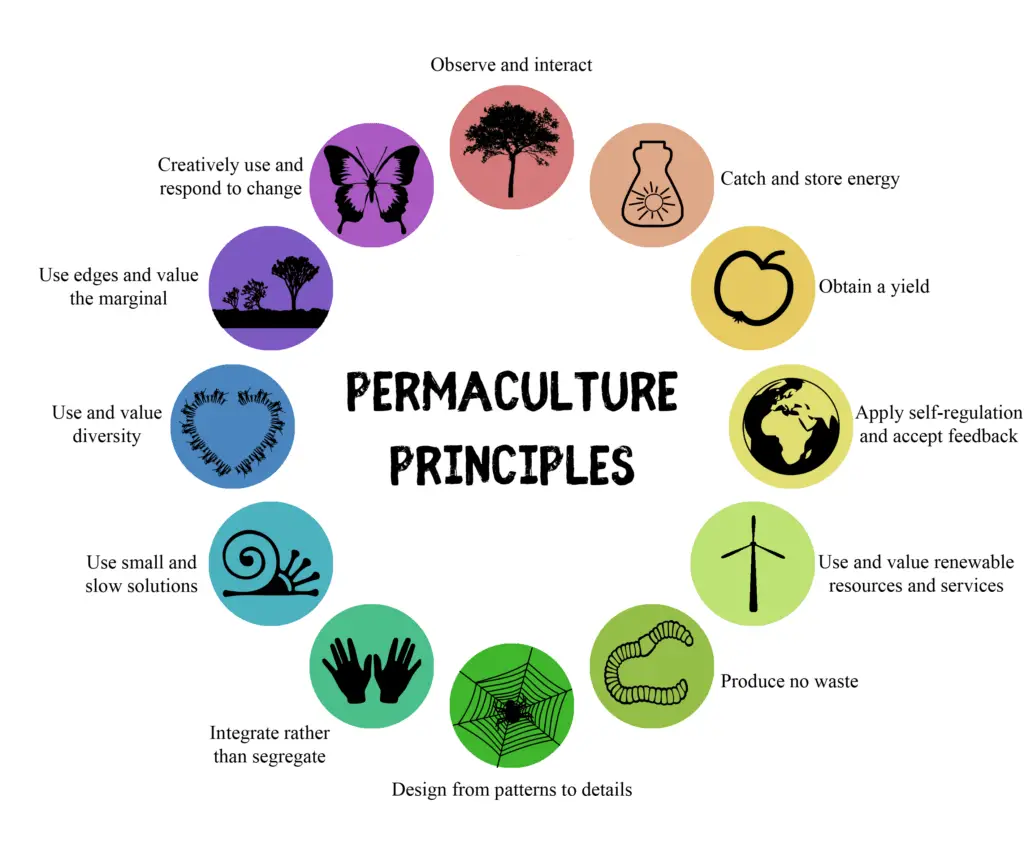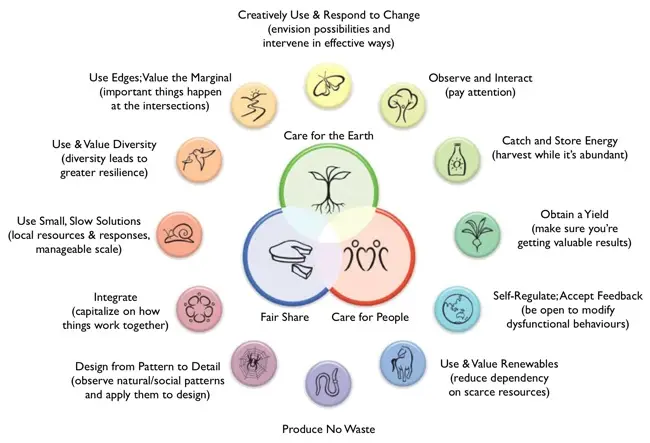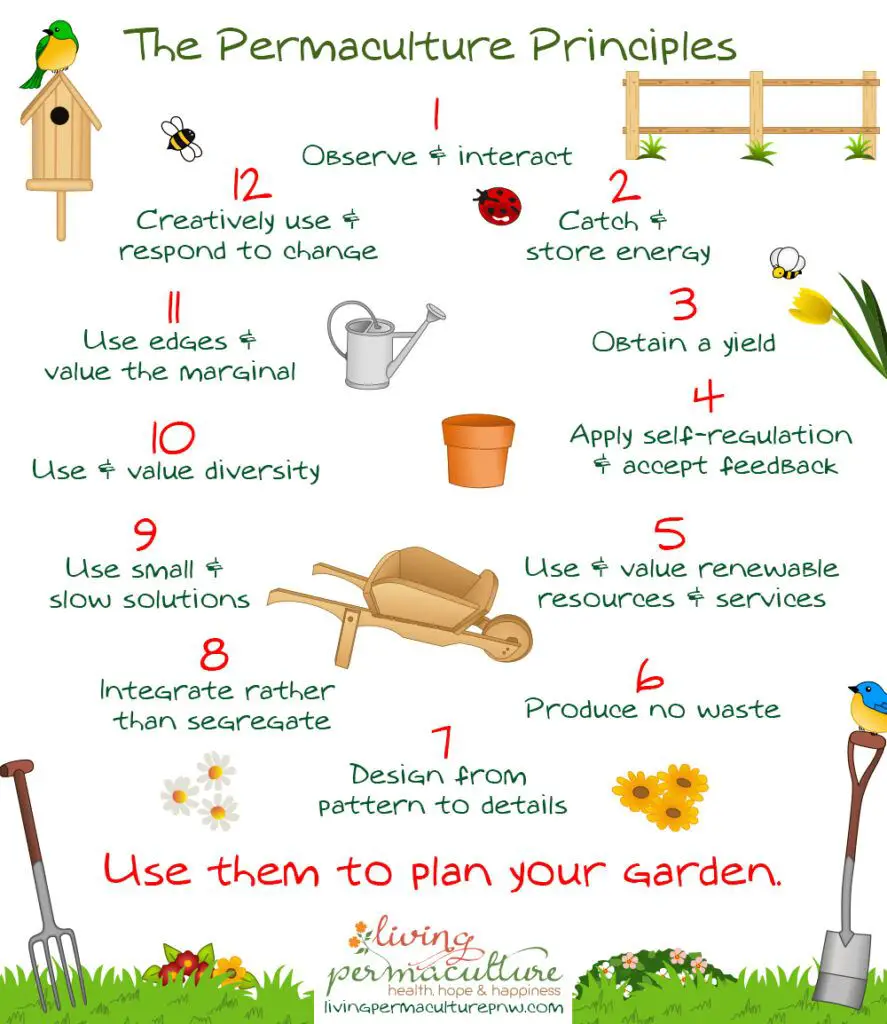Have you ever considered integrating permaculture principles into your prepping practices? Permaculture, a design system that mimics natural ecosystems, can be incredibly beneficial for sustainable living and preparedness. In this article, we will explore how you can incorporate permaculture principles into your prepping strategies to create a more resilient and self-sufficient lifestyle.

What is Permaculture?
Permaculture is a design approach that aims to create sustainable and self-sufficient ecosystems by working with nature rather than against it. It draws inspiration from natural patterns and processes to design landscapes, buildings, and systems that are regenerative and productive. By following permaculture principles, you can create systems that are not only environmentally friendly but also highly efficient and resilient.
Permaculture Ethics
At the core of permaculture are three ethics: Earth Care, People Care, and Fair Share. Earth Care emphasizes the importance of taking care of the planet and its resources, People Care focuses on meeting the needs of individuals and communities, and Fair Share encourages equitable distribution of resources. By aligning your prepping practices with these ethics, you can create a more sustainable and holistic approach to preparedness.
Integrating Permaculture Principles into Prepping
Integrating permaculture principles into your prepping practices can help you build a more resilient and self-sufficient lifestyle. By incorporating principles such as observation, diversity, and resilience, you can create systems that are better able to withstand disruptions and provide for your needs in times of crisis.
Observation
Observation is a key principle in permaculture, as it allows you to understand the patterns and processes in your environment before making any changes. By observing the natural systems around you, you can gain valuable insights into how to design more effective prepping strategies. Take the time to observe the sun’s path, water flow, and wind patterns in your area to make informed decisions about how to best utilize your resources.
Diversity
Diversity is another important principle in permaculture, as it helps to increase resilience and productivity in ecosystems. By incorporating a wide variety of plants, animals, and microorganisms into your prepping systems, you can create a more robust and adaptable environment. Consider planting a diverse range of food crops, raising different livestock breeds, and fostering a healthy soil microbiome to enhance the resiliency of your prepping practices.
Resilience
Resilience is the ability of a system to withstand and recover from disruptions, and it is a crucial principle in both permaculture and prepping. By designing your prepping systems with resilience in mind, you can increase your ability to adapt to changing conditions and bounce back from challenges. Focus on building redundancies, creating feedback loops, and fostering relationships with your local community to enhance the resilience of your prepping practices.

Permaculture Techniques for Prepping
In addition to principles, permaculture offers a variety of techniques that can be valuable for preppers. By incorporating techniques such as water harvesting, soil building, and companion planting into your prepping strategies, you can create more sustainable and productive systems that support your self-sufficiency goals.
Water Harvesting
Water harvesting is a technique that involves collecting and storing rainwater for later use. In a preparedness context, water harvesting can help you become more self-sufficient by providing a reliable source of water for your needs. Consider installing rain barrels, swales, or greywater systems to capture and store rainwater on your property. By using rainwater for irrigation, drinking, and sanitation, you can reduce your dependence on external sources of water and increase your resilience in times of scarcity.
Soil Building
Soil building is another essential technique in permaculture that can benefit preppers. Healthy soil is the foundation of a productive and resilient ecosystem, as it supports plant growth, regulates water flow, and sequesters carbon. By focusing on building healthy soil through techniques such as composting, cover cropping, and no-till gardening, you can improve the fertility and structure of your soil. Healthy soil will not only support your food production efforts but also enhance the resilience of your prepping systems by increasing nutrient availability and water retention.
Companion Planting
Companion planting is a technique that involves planting different species of plants together to benefit each other in various ways. By strategically arranging plants based on their complementary relationships, you can increase productivity, reduce pests, and improve soil health in your prepping systems. Consider planting nitrogen-fixing plants near heavy feeders, aromatic herbs to repel pests, and ground cover crops to suppress weeds. By practicing companion planting, you can create a more diverse and resilient ecosystem that supports your self-sufficiency goals.

Designing Permaculture-Inspired Prepping Systems
Designing permaculture-inspired prepping systems involves applying permaculture principles and techniques to create self-sufficient and resilient environments. By following a design process that incorporates elements such as zoning, sector analysis, and guild planting, you can develop systems that are efficient, productive, and sustainable.
Zoning
Zoning is a design concept in permaculture that involves organizing elements based on their frequency of use and need for attention. By zoning your prepping systems, you can optimize the placement of elements to minimize effort and maximize productivity. Divide your property into zones based on how often you interact with them, placing high-intensity elements near your home and low-intensity elements further away. By designing your zones thoughtfully, you can create a more efficient and convenient environment for prepping.
Sector Analysis
Sector analysis is a design tool in permaculture that involves mapping external influences such as sun, wind, and water flow to inform design decisions. By conducting a sector analysis of your property, you can identify opportunities and constraints in your environment that may impact your prepping systems. Consider the patterns of sunlight, prevailing winds, and water sources in your area to optimize the placement of elements in your design. By aligning your systems with external factors, you can enhance their efficiency and resilience.
Guild Planting
Guild planting is a planting technique in permaculture that involves grouping plants together based on their relationships and functions. By creating plant guilds that support each other through beneficial interactions, you can increase productivity, diversity, and resilience in your prepping systems. Design guilds that include a mix of nitrogen-fixing plants, dynamic accumulators, pest-repellent herbs, and ground cover crops to create mutually beneficial relationships. By practicing guild planting, you can create a more self-sufficient and regenerative ecosystem that enhances the productivity of your prepping practices.

Conclusion
Integrating permaculture principles into your prepping practices can help you build a more resilient and self-sufficient lifestyle. By incorporating principles such as observation, diversity, and resilience, and techniques such as water harvesting, soil building, and companion planting, you can create systems that support your self-sufficiency goals. Designing permaculture-inspired prepping systems that incorporate elements such as zoning, sector analysis, and guild planting can further enhance the efficiency, productivity, and sustainability of your preparedness efforts. By embracing permaculture principles and practices, you can create a more holistic and regenerative approach to prepping that benefits both you and the planet.

